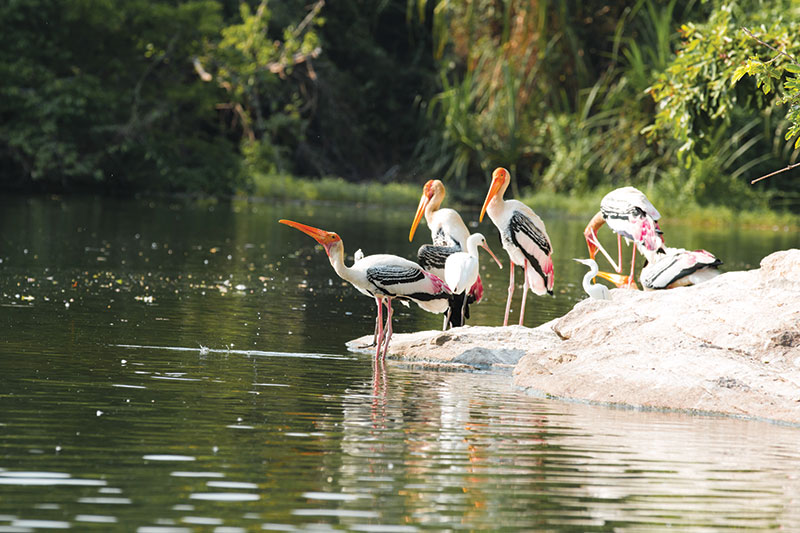Weekend trippers out of Delhi can take a rejuvenating break in Agra and Fatehpur Sikri. Easy reach of the scenic Bharatpur bird sanctuary with its myriad mix of colourful birds is an additional incentive The post-liberalisation (1991) emergence of Delhi (pop. 19.8 million), the administrative capital of the country, into a vibrant epicentre of business and industry, has multiplied the inflow of business visitors and tourists to this city of broad boulevards, gardens and carefully preserved ancient monuments. With the capital’s public spaces, tourist haunts and parks choc-a-bloc during weekends and holidays, a growing number of people head out of the city into the neighbouring states of Uttar Pradesh and Rajasthan for a breather. The excellent new roads infrastructure which links Delhi with Agra, Bharatpur and Jaipur is further motivation for people to visit contiguous historical, cultural and recreation destinations more often. Recently your correspondent joined the exodus of weekend trippers out of Delhi to take a rejuvenating break in Agra and Fatehpur Sikri. Easy reach of the scenic bird sanctuary at Bharatpur with its myriad mix of migratory and colourful birds was an additional incentive. AGRA The sprawling city of Agra (pop. 1.9 million), first mentioned in the Mahabharata as Agraban, acquired prominence when the first Mughal emperor Babur made it his capital in 1526. The later Mughals also displayed a special fondness for Agra which is evidenced by the number of ancient monuments that are an integral aspect of the city. Most rulers used Agra as a garrison capital, together with Delhi and Lahore. Though contemporary Agra is an archaeologist’s delight with its magnificent monuments and historical structures, in terms of urban amenities and facilities, it is like any of India’s cities: in a state of chaos and imminent collapse. Agra’s unregulated traffic and failed municipal facilities display the rot of small town India at its worst — this despite millions of tourists streaming into it every month. All potential visitors need to be aware that they can and will be importuned every step of the way. From the second you begin your walk to a monument, whether it’s the Taj, Sikandara or Itmadudaulah, visitors are besieged by guides and hawkers selling them everything imaginable and unimaginable. Some of it is useful — postcards or sorely needed bottles of water — and the rest of doubtful value — whips, portable chess sets, carved elephants — not the kind of items you need to weigh yourself down as you troop precariously through the steep, cobbled roads of a fort or a tomb invariably set in large gardens which necessitates long treks on uncovered and unrelentingly sunny paths. The Taj Mahal All the trials, tribulations and harassment a visitor to Agra is inevitably subjected to is compensated by this architectural masterpiece which overawes even those who have seen it time and again. Among the seven wonders of the world, it is believed that the Taj Mahal attracts over 200,000 tourists from around the world annually. The Mughal emperor Shah Jahan…
Mughal splendours and a bird sanctuary
